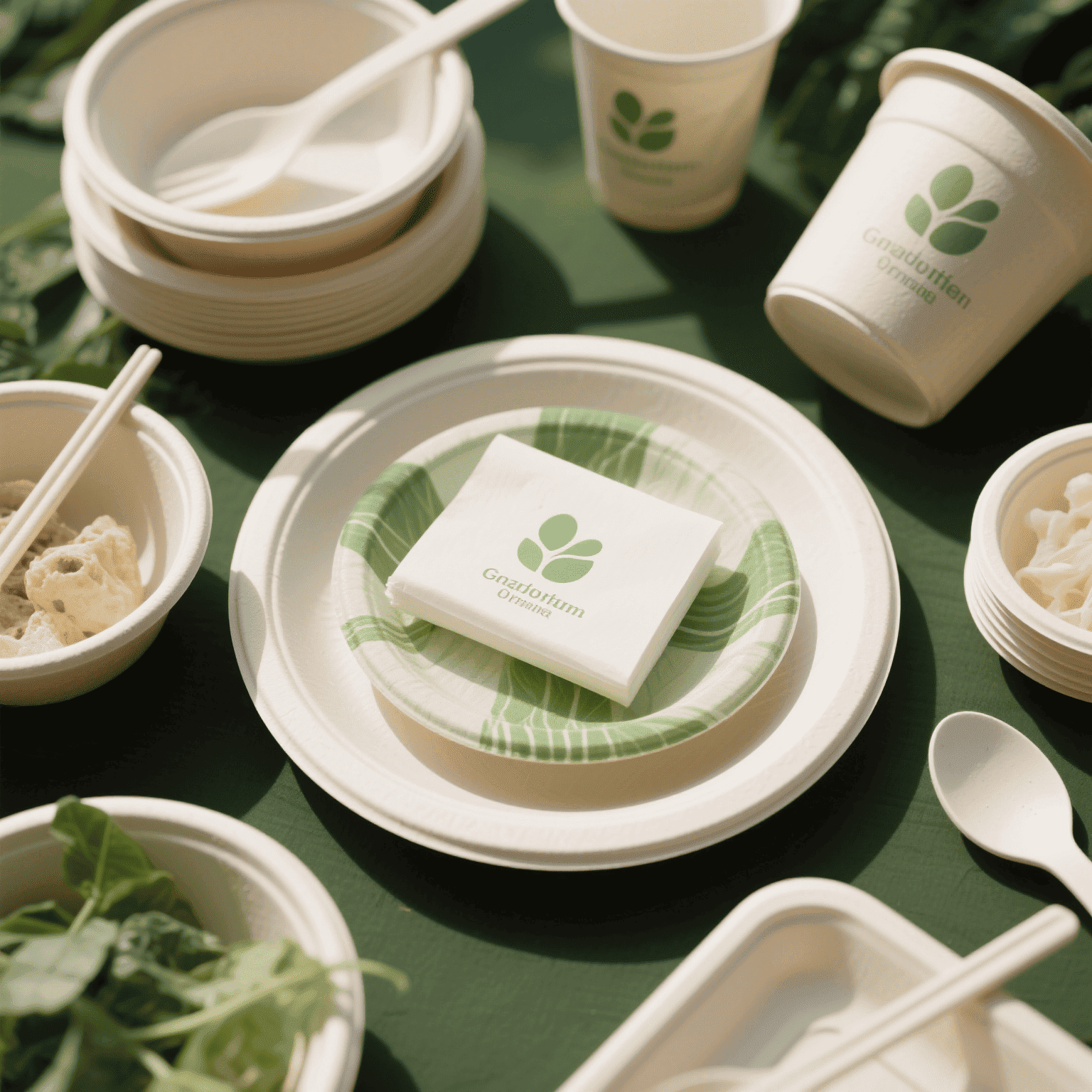Say Goodbye to Plastic Waste with Bagasse Plates
Introduction: The Growing Crisis of Plastic Waste
Plastic pollution has reached alarming levels, with single-use food packaging among the leading contributors. Globally, more than 300 million tons of plastic are produced each year, and a significant portion ends up in landfills or the ocean. Disposable plastic plates, widely used in food services, parties, and events, can take 500–1000 years to decompose—leaving a toxic trail behind.
In response, a new generation of biodegradable, renewable, and compostable materials is emerging. One of the most promising is bagasse, the fibrous byproduct of sugarcane. Bagasse plates offer a sustainable alternative that not only reduces waste but also enhances food safety, functionality, and brand image.
What Are Bagasse Plates?
Bagasse plates are made from the residue left after extracting juice from sugarcane stalks. Rather than being incinerated or discarded, this agricultural waste is transformed into durable, compostable tableware.
Key Features:
-
Made from 100% plant fiber
-
Biodegradable and compostable within 60–90 days
-
Heat-resistant up to 200°C
-
Oil- and moisture-resistant without any plastic coatings
-
Safe for microwave and freezer use
Bagasse plates support a circular economy—turning waste into a usable product and returning it to the earth without harming the environment.
Environmental Benefits of Bagasse Plates
Unlike plastic, bagasse is renewable and rapidly degradable. Here’s how bagasse plates outperform plastic:
| Feature | Plastic Plates | Bagasse Plates |
|---|---|---|
| Material Source | Petroleum (non-renewable) | Sugarcane waste (renewable) |
| Decomposition Time | 500+ years | 60–90 days |
| Compostable | ❌ No | ✅ Yes |
| Carbon Emissions (LCA) | High | Up to 70% lower |
| Microplastics Released | ✅ Yes | ❌ None |
| Energy Used in Production | Fossil-based | 40–60% less energy |
A life cycle analysis shows that switching from plastic to bagasse can cut packaging-related carbon emissions by nearly 65%, while also supporting agricultural waste reduction.
Performance and Practical Advantages
Bagasse plates are not just eco-friendly—they’re also high-performing in demanding food service settings. Their structural integrity, thermal resistance, and food safety standards make them ideal for:
-
Restaurants and cafés
-
Catering services
-
Schools and hospitals
-
Outdoor events and festivals
-
Meal delivery and takeaway operations
They perform well with hot, greasy, or wet foods—outclassing many paper or coated fiber alternatives.
Case Study: Reducing Waste at Scale
A leading event organizer in Australia transitioned from plastic to bagasse plates across all operations. Over 12 months:
-
Over 1.2 million plastic plates were replaced
-
Compost collection rose by 54%, improving waste diversion rates
-
Customers rated the sustainability initiative 9.4/10
-
The company received government grants tied to waste reduction benchmarks
This real-world case illustrates how bagasse plates can make a measurable impact, both environmentally and economically.
Regulatory Trends and Global Demand
Governments are cracking down on single-use plastics. More than 80 countries now have restrictions on plastic tableware. Examples include:
-
EU bans on plastic cutlery and plates
-
U.S. state laws mandating compostable packaging
-
Asia-Pacific importers requiring PFAS-free, plant-based alternatives
Bagasse plates are uniquely positioned to help companies comply with these regulations and transition smoothly into greener operations.
Why Consumers Love Bagasse
In consumer surveys, bagasse plates consistently score high on:
-
Eco-awareness: Seen as a legitimate plastic replacement
-
Food safety: Free from BPA, PFAS, and synthetic resins
-
Aesthetics: Modern, neutral appearance suitable for all cuisines
-
Functionality: No leaks, warping, or structural failure during use
Modern consumers—especially Gen Z and millennials—prefer brands that embrace sustainable practices, with packaging being a major touchpoint of environmental trust.
Business Benefits: Beyond Sustainability
Choosing bagasse plates isn’t just an ethical move—it’s also strategically smart.
-
✅ Brand differentiation in crowded foodservice markets
-
✅ Lower waste disposal costs in composting-enabled regions
-
✅ Access to green certifications and subsidies
-
✅ Improved ESG reporting metrics, particularly in Scope 3 emissions
As sustainability becomes a key purchasing factor, switching to bagasse plates can elevate a brand’s profile and open new market opportunities.
Addressing Common Concerns
Q: Are bagasse plates expensive?
They are competitively priced, and often more cost-effective when considering long-term savings, regulatory compliance, and brand value.
Q: Are they safe for all types of food?
Yes. They are food-grade certified, and safe for both hot and cold foods.
Q: Can they be composted at home?
While industrial composting is ideal, thin bagasse food containers can break down in home compost within 180 days, especially when shredded.
Conclusion: A Smarter Way to Serve—and Protect the Planet
In a world where disposable convenience often clashes with environmental values, bagasse plates strike the perfect balance. They offer the performance foodservice businesses need, with the ecological responsibility consumers and regulators demand.
By replacing plastic with bagasse, we don’t just reduce waste—we redefine our relationship with packaging. It’s not just a product shift—it’s a step toward a cleaner, compostable, and conscious future.


Comments